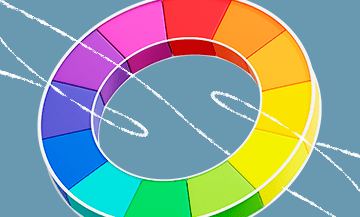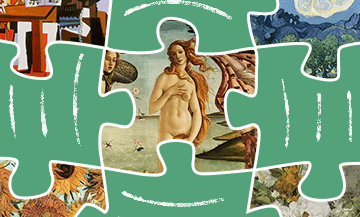Art in all its forms inspires and captivates with its magic, but there are subtle differences between artistic forms that we rarely think about.
One such fascinating journey into the world of creativity is the distinction between painting and drawing. At first glance, these two forms of expression might seem similar, but upon closer inspection, it becomes clear that each has its unique essence and approach.
In this article, we will analyze how painting and drawing differ from each other. Ready to uncover the secrets of canvas and paper?
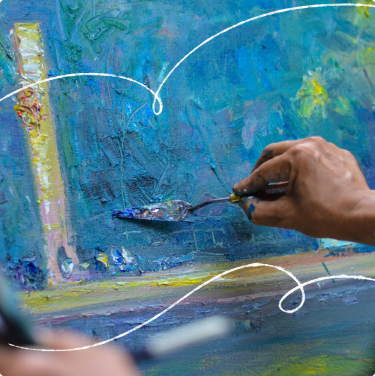
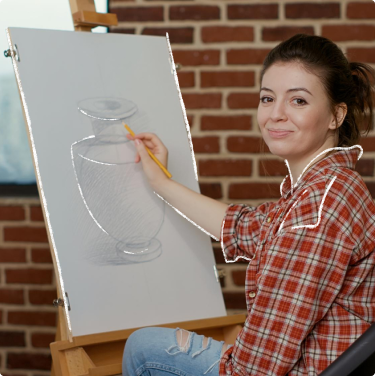
Painting: definition of traditional painting
Painting is a form of visual art expressed on canvas, paper, or wood. Painters use oil, acrylic, or watercolor paints to create their works.
Painting allows artists to express their ideas, feelings, perceptions of the world, and imagination through color, form, lines, and composition. In simple terms, painting is what is created with paint.
Traditional painting is passed down from generation to generation, preserving its rich history and aiming to immortalize moments and feelings on canvas. It remains in an eternal struggle with changing trends and technologies, but its beauty and strength are everlasting.
At the core of traditional painting is the artist’s skill. It is an art form requiring careful study, knowledge of color harmony, and the ability to observe light and shadow. Artists spend years perfecting their skills and techniques in painting.
Traditional painting can vary in style and genre — from realism to impressionism and abstraction. Each style embodies a unique aesthetic.
Traveling through time, we can meet the greatest creators: Leonardo da Vinci, Vincent van Gogh, or Edvard Munch. All of them left an indelible mark on history.
Today, traditional painting continues to thrive despite numerous new technologies and means of artistic expression.
Artists still choose this form of art when they want to share their worldview, and each new masterpiece in painting brings a piece of beauty into the world.

Key means of expression: color.
Number of colors used: at the artist’s discretion.
Material:canvas, wood, paper.
Renaissance paintings, for example, reveal the beauty and harmony of that time, while contemporary art reflects the challenges and contradictions of our era. All this makes painting an integral part of humanity’s cultural heritage and a source of inspiration.
Pattern: Definition of Traditional Pattern
Drawing is created not with paints, but with pencils. In ancient times, artists used charcoal, sepia, and ink. However, these materials can still be used and combined in drawing today.
Although both drawing and painting use color, painting is more commonly associated with a brighter and richer use of the palette, while drawing is often limited to black-and-white. Drawing is often just the first stage of work on a painting. It can be seen as a sketch or draft.
Traditional drawing also allows us to observe the evolution of art over the centuries. From ancient cave drawings to the masterful works of Renaissance artists, traditional drawing is a witness to time and cultural changes.
In drawing, color is not important, but lines and contours are crucial for realizing the artist’s vision.
Drawing is flat, while painting is volumetric and deep.
Drawing is suited for detailed and contour images, while painting is a free and expressive form of art.
In drawing, colors are less saturated, whereas painting dazzles with a variety of shades.
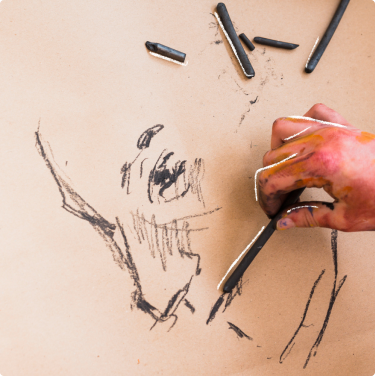
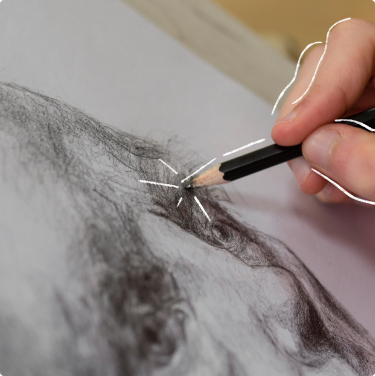
Key means of expression: line and tone.
Material: paper.
Number of colors used: most often one, but if it’s a pencil drawing, there may be two or more.
If ideas don’t work out, rough sketches and drafts won’t take much time or costly materials. This is the advantage of drawing — it can always be erased and started again.
Main Differences Between Painting and Drawing
The world of art, like art itself, is rich in diversity and expressive forms. However, among the many artistic expressions, two stand out: painting and drawing.
Visual and simple example: painting and drawing require different skills and approaches.
In drawing, when you aim to create portraits or fantastical creatures, a deep knowledge of human and animal anatomy is a crucial key to success. However, when it comes to painting, the focus needs to be on capturing light and shadow. In the former case — details and precision; in the latter — depth and volume.
Without this knowledge, you risk remaining in the realm of abstract forms and losing the ability to create realistic works.
To better understand the differences between painting and drawing, let’s examine them in detail.
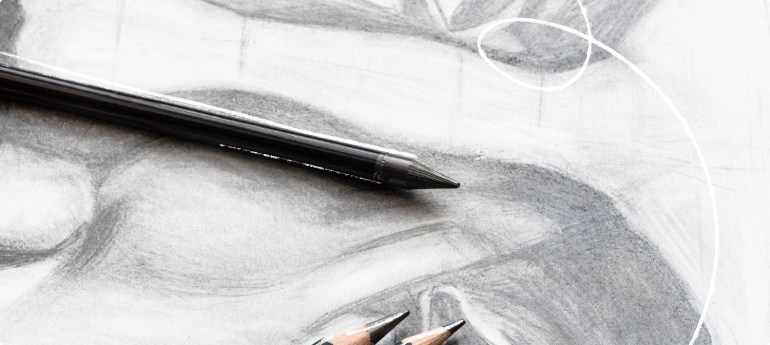
Materials and Technique
To start, let’s look into the artist’s arsenal. In drawing, artists most often use pens, pencils, chalk, charcoal, ink, and other drawing materials. Their canvas is paper. This art form is expressed through lines, strokes, and contours, creating images constrained to a two-dimensional space.
In painting, however, the artist has the opportunity to use a brush and rich paints—acrylics, oils, watercolors, or gouache. These materials are applied to a canvas or other surfaces, and thus begins the magic.
Space
In painting, the artist uses various techniques: perspective, light and shadow, creating a three-dimensional effect, resulting in an illusion of depth. It’s like a window into a world that extends beyond the canvas.
In drawing, this opportunity is mostly absent. It is confined to a two-dimensional world of lines and contours.
Color and Texture
We all know that the world is colorful, like a rainbow. Painting provides the artist with a chance to capture this variety of colors in their work. Paints, whether bright and vibrant or soft and pastel, help the artist create a visual delight.
Drawing, on the other hand, is often limited to black-and-white or monochromatic images.
Time
All art requires time and effort, but painting is a more labor-intensive process. The artist must pay attention to every detail and create the artwork in multiple stages.
Drawing, in contrast, is a quick and direct form of work. Artistic ideas are realized instantly and without delays.
Value
Painting is unique and one-of-a-kind. Each painting is a true piece of art, created with a special approach. In contrast, drawings can have many copies and are significantly easier to produce. They do not carry the same value as paintings.
Painting | Drawing |
|---|---|
The main medium is color | Based on lines, strokes, dots |
Many shades on one canvas | Minimum colors
|
Color transitions, gradients
| Contrast
|
Often there is no background | Background is important |
Abundance of minor details | All details are expressive and meaningful |
It takes a lot of time | Work gets done quickly |
The painting is unique, in one copy | Mass scale and replication |
Thus, painting can be compared to a woman, while drawing can be compared to a man. Painting features delicate and subtle transitions between colors and tones, while drawing has clear and sharp lines, as well as tonal relationships, giving it a distinct character and expressiveness.
As you can see, painting and drawing, though both belong to the world of art, are as different as night and day. They use different materials, techniques, and color possibilities. Yet, each of these arts possesses its own beauty and impacts us in a unique way.
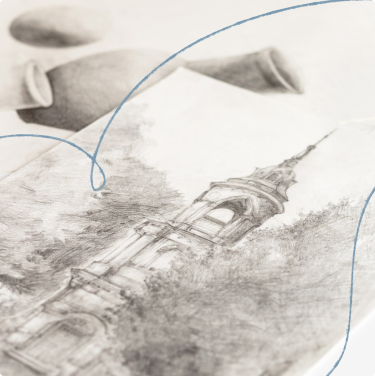
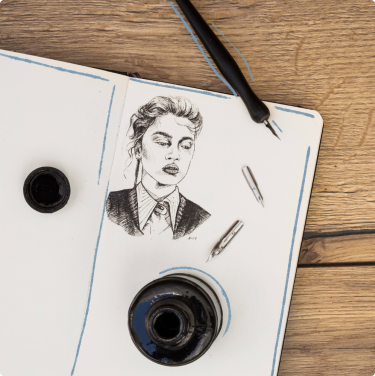
Painting or drawing: which is more popular?
Painting is associated with large canvases that recreate incredible landscapes, portraits, abstract works, and much more. It captures the viewer’s attention with its depth, texture, and color richness. It has a rich heritage, spanning thousands of years of history.
Drawing begins with the simple act of sketching lines and shades on paper. Such an unpretentious, quick, and expressive sketch is the very first step towards a grand work. Drawing is more intimate and open to anyone who wants to creatively express themselves.
So, which art form is more popular?
The answer depends on many factors. Firstly, personal preferences and the style of each artist play a role. Some prefer painting for its ability to play with the palette and light, creating impressive works that can evoke deep emotions in viewers.
Others might prefer drawing for its simplicity and detail.
Moreover, it’s important to consider trends and societal tastes. Throughout history, we’ve seen different waves of popularity for various styles and forms of art. For example, during the Renaissance, painting was at the height of its glory, while today minimalism has taken center stage, and drawing now holds a significant place—especially in illustrations and comics.
Digital Drawing vs Digital Painting
Classical visual art on paper is increasingly giving way to advanced technological achievements. The rapid development of computer technology has made digital drawing and painting an appealing alternative. What does this mean?
Digital drawing — this is the art of creating images using graphic tablets and styluses. This process is often associated with manual drawing and has a close relation to classical drawing on paper.
The main tools here are lines, contours, and shading. A digital artist typically works with individual elements of the image and refines details and textures. It allows for control over every tiny detail and achieving maximum realism.
Digital painting also allows artists to express their vision and creative inspiration using a computer, graphic tablet, and specialized software. An artist can paint in various styles, play with textures and colors, all without any limitations.


In the world of digital painting, you have access to literally millions of colors and shades, which is not the case with traditional painting, where paints and tools are limited.
With digital painting, you can instantly share your work with the world, receive feedback, and get inspired by the projects of other creative people.
Here are a few programs that might inspire you to explore digital art:
 Adobe Photoshop:
Adobe Photoshop:
Description: one of the most popular graphic editors, offering rich features for digital painting, retouching, and image manipulation.
Features: various drawing tools, scaling, filters, and layers.
 Corel Painter:
Corel Painter:
Description: a professional digital painting program that simulates natural materials and techniques.
Features: over 900 customizable brushes, cloning modes, scaling, and rich textural capabilities.
 Procreate:
Procreate:
Description: a popular drawing app for iPad with numerous brushes and tools.
Features: intuitive interface, multitasking, animation, and Apple Pencil support.
What to choose: digital painting or traditional?
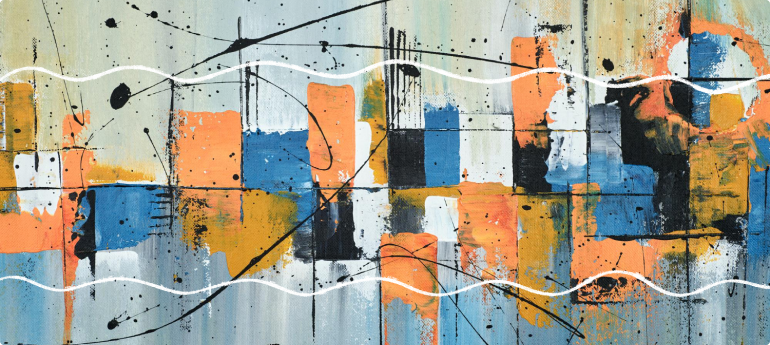
The question of choosing between digital and traditional painting raises an interesting dilemma, almost like choosing between old-fashioned handwritten letters and modern email. Both approaches to painting have their unique charms, and the choice between them depends on your preferences and goals.
Traditional painting boasts a rich history tied to many cultures and eras. Everything, from Rubens’ oil paintings on canvas to Van Gogh’s watercolor on paper, is infused with magic.
Painting on canvas or paper allows you to feel the materials and textures, letting your hands become part of the artwork.
On the other hand, digital painting offers endless possibilities. It opens doors to virtual canvases where colors, textures, and even shapes can change in an instant. It’s an ideal choice for those who want to experiment and rapidly advance in their art.
Yet, it’s important to understand that the question of “digital or traditional?” does not require a definitive answer. Many artists successfully combine both approaches, finding a balance between traditional skills and modern technology.
No matter which path you choose, what matters is that art brings you joy and helps bring your creative ideas to life.
Question-answer
Painting is one of the primary forms of visual art with a long history, spanning thousands of years. Artists use various painting techniques—textures and colors—to express artistic intentions through their works.
Painting can be realistic, abstract, impressionistic, or surrealistic, but in every case, it reflects the artistic individuality of the creator.
Painting acts as a bridge between different cultures and eras. Great artists like Leonardo da Vinci, Vincent van Gogh, and Pablo Picasso have left us invaluable masterpieces that continue to inspire and fascinate to this day.
To put it succinctly: painting is the art of depicting reality with colors.
Painting is perhaps one of the most intimate and expressive forms of art. This genre allows the artist to depict their thoughts, emotions, and inspiration on canvas using paints, brushstrokes, and colors. The main tool in painting is the brush, and the canvas becomes a blank slate ready to capture moments in time and the world around us. In painting, an artist can create abstract works, realistic scenes, or even surreal worlds.
Visual art, on the other hand, is a broader term that encompasses various forms of artistic expression, including painting, graphics, sculpture, photography, and even design. The main difference is that visual art includes not only painting but also other methods of creating images using various techniques and materials.
This means that visual art can be more diverse and multifaceted.
Painting is the art of creating works on canvas or other surfaces using paints, oils, watercolors, or acrylics. It provides the artist with limitless possibilities to play with color, form, and texture.
Computer graphics is a modern art form made possible by technological advancements. Artists use graphic tablets, computer programs, and specialized styluses to create digital drawings, paintings, and illustrations.
Computer graphics offer artists and designers endless possibilities for creativity and self-expression, and it continues to evolve.



